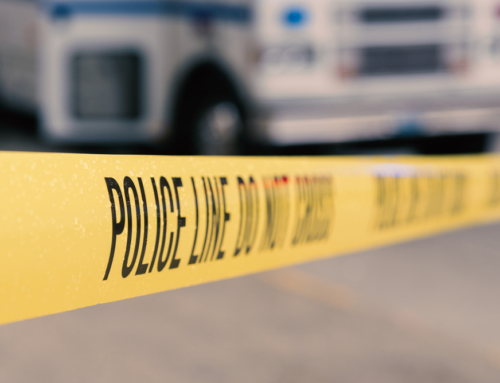2023 ended yet another year of unprecedented highs in school shootings. It’s time to confront the unsettling reality we now face in America. For the third consecutive year, these incidents have outpaced previous records, underscoring the urgent need for proactive measures.
According to David Riedman, founder of the K-12 School Shooting Database and co-founder of the Homeland Security Advanced Thinking Program, there were five school shootings last year and each had four or more victims. A total of 340 school shootings had been recorded as of Dec. 20 by the K-12 School Shooting Database. (The database keeps track of gun violence in schools. It counts whenever a gun is fired or shown with intent, or when a bullet hits school property. The number of victims, time, day, or reason behind the incident doesn’t matter.)
The Escalating Concern
“Active shooter incidents are unpredictable, making preparedness an essential element of safeguarding schools against potential threats,” says Charles Law, founder of Law Security & Investigations Inc. “The alarming rise in school shootings demands a re-evaluation of our approach to safety in educational environments. Beyond expressing concern, it is crucial to channel collective energy and resources into practical solutions.”
The Need for Training
A general outline of active shooter survival training for schools must encompass various aspects to effectively prepare students and staff for such emergencies. This includes fostering a culture of situational awareness, understanding the A.L.I.V.E. protocol, and imparting practical skills for swift decision-making.
Training should address both prevention and response strategies, empowering individuals to identify warning signs, report concerns, and take decisive actions when necessary.
Checklist for active shooter survival training for schools:
Preparation & Planning:
There should be a comprehensive emergency response plan that includes procedures for responding to active shooter incidents. This plan should be well-documented and regularly reviewed and updated.
Student Training:
Age-appropriate training for students is essential. Introducing and understanding the “ALIVE” protocol is a good start. Consider conducting age-appropriate drills without causing unnecessary fear.
Communication:
Establish clear communication protocols for alerting facility occupants about an active shooter situation. This could include public address systems, text messages, and alarms.
Law Enforcement Collaboration:
Work closely with local law enforcement to develop strategies for responding to active shooter incidents. Make sure joint training exercises with law enforcement take place to ensure a coordinated response.
Tactical Emergency Casualty Care:
Train staff on basic life-saving techniques until emergency medical response teams arrive. This could be the difference between life and death in certain situations.
Faculty and Staff Training:
Train staff, including employees, teachers, administrators, support personnel, etc., on how to recognize potential warning signs and how to respond during an active shooter incident. Conduct regular drills to practice different scenarios and responses.
Parent and Community Involvement:
Keep parents and the community informed about emergency response plans and procedures. Conduct informational sessions or workshops to address concerns and questions.
Review and Improve:
Regularly review and update the emergency response plan based on lessons learned from drills and real incidents
Situational Awareness and Prevention:
Encouraging a heightened sense of situational awareness is the first line of defense. By educating students and staff about recognizing unusual behaviors or signs of potential threats, schools can create a proactive environment where concerns are reported and addressed promptly. Prevention, in this context, becomes a collaborative effort that involves the entire school community.
What is The A.L.I.V.E. Protocol?
The A.L.I.V.E. protocol is a fundamental component of active shooter survival training. It stands for Assess, Leave, Impede, Violence, Expose. It is a structured and adaptive framework for people to either assess, leave, or impede an attacker or attackers. It stresses to consider violence as a last resort. Once danger has passed they can safely expose themselves.
Practical Skills and Drills: Active shooter survival training should go beyond theoretical knowledge and include practical drills that simulate real-life scenarios. These drills not only reinforce the A.L.I.V.E. protocol but also familiarize individuals with evacuation routes, safe hiding places, and effective communication strategies.
Regular and realistic exercises help build muscle memory, ensuring a more controlled response during high-stress situations.
In the face of escalating school shootings, the need for comprehensive active shooter survival training in schools is more urgent than ever. By fostering a culture of preparedness, implementing the A.L.I.V.E. protocol, and incorporating practical skills and drills, schools can empower their communities to respond effectively to potential threats. It is our collective responsibility to turn concern into action, ensuring that every student and staff member is equipped with the knowledge and skills needed to navigate these unsettling times with resilience and vigilance.




